West Hartford Street Smart: Lemay Street

Audio By Carbonatix
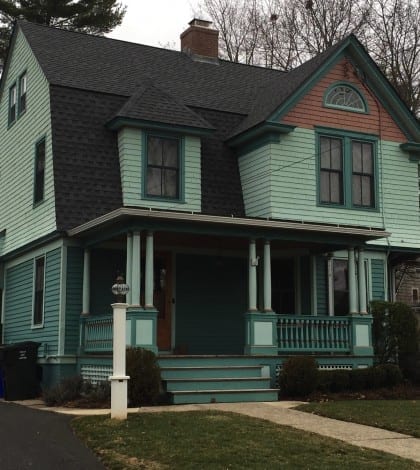
Photograph of 9 Lemay St., built in 1905 by George G. LeMay. (Photograph by Jennifer DiCola Matos)
‘West Hartford Street Smart,’ written by Noah Webster House & West Hartford Historical Society Executive Director Jennifer DiCola Matos, brings to life the history of many of the town’s unique streets and neighborhoods.
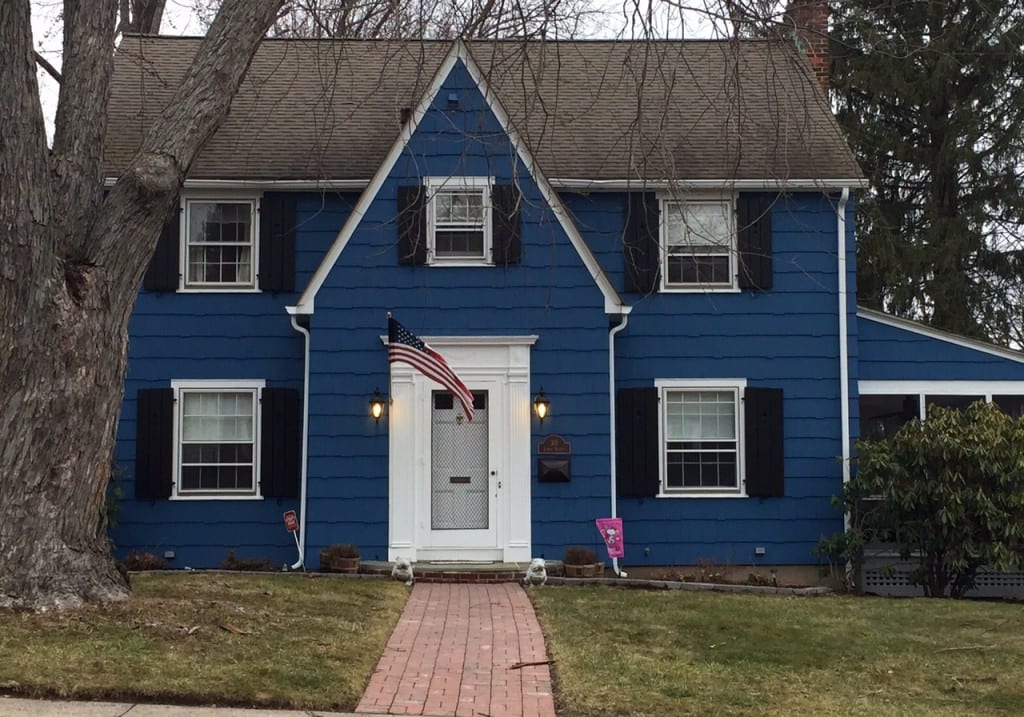
Photograph of 30 Lemay Street, built in 1935. This is the house where John Davison grew up. The monthly rent was $90 in the years of WWII. (Photograph by Jennifer DiCola Matos)
By Jennifer DiCola Matos
Lemay Street, which runs parallel to and between Westland Avenue and Sunset Terrace, is one of the side streets that runs north to south between Sedgwick Road and Farmington Avenue. I had never driven on Lemay, nor given it much thought, until a gentleman I know, Mr. John Davison of West Hartford, mentioned that he grew up on the street in the 1940s.
During the years of World War II, Mr. Davison lived with his family at 30 Lemay St., a house that the family rented from brothers Carl and Herbert Hofer for $90 per month. The house had been built in 1935 on land that the Hofers purchased from the street’s namesake, the LeMay family.
During the years of WWII, West Hartford residents were required to participate in “blackout” drills. These drills were scheduled and the residents were notified in advance. When they heard the air raid alarm signal, which was a series of intermittent siren blasts, they knew to turn off all the lights or pull down their blackout shades. Mr. Davison’s father was an air raid “warden,” tasked with supervising the blackout drills. Mr. Davison remembers as a young boy tagging along with his father as he made his rounds, outfitted in a pith helmet, down Lemay Street and around the block to make sure that all houses were complying with the blackout requirement.
Davison also recalls the LeMay farmhouse at 9 Lemay St., where Mr. LeMay still lived and kept chickens and a lamb for Easter.
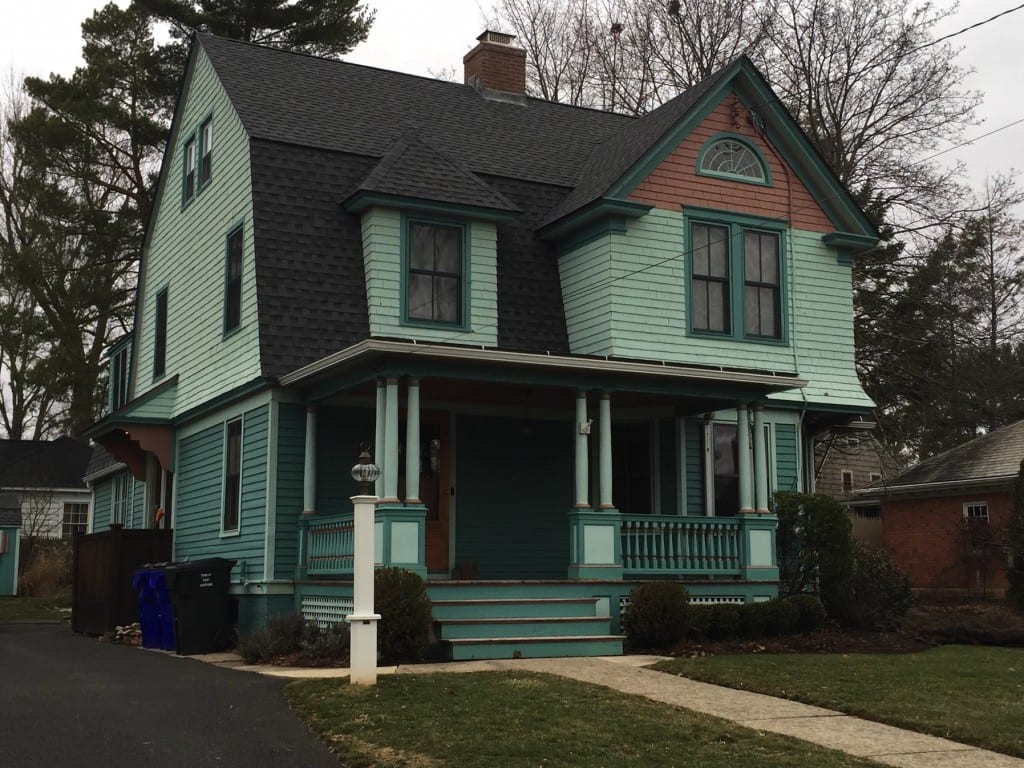
Photograph of 9 Lemay St., built in 1905 by George G. LeMay. (Photograph by Jennifer DiCola Matos)
Louis C. LeMay was the third generation of his family to live in the area that would become known as Lemay Street. He had grown up in the house at 9 Lemay, probably built by his father George G. LeMay. As a married man with two sons, Louis built the house at 15 Lemay St., next door to his father and mother. Later, when his parents died, Louis moved back into his family home. Louis LeMay made his living as a foreman at a “typewriter company,” most likely either Royal or Underwood Typewriter Company.
The first LeMay to come to West Hartford was Joseph LeMay, who had been born in Canada in 1820. By 1870, he owned a farm just south of Farmington Avenue with his wife, daughter, son George G. (Louis’s father), one farm hand and two domestic servants.
George worked on the farm as a youngster, but after his father’s death he seemed to rethink the farming legacy left to him. By 1900, George appears in the U.S. Census with the occupation of “carpenter.” Perhaps it was he who, in 1905, built the family house that still stands at 9 Lemay St. today. At the time the house was built, the street address was simply “off Farmington Avenue at 1114.” But by 1909, Lemay Street had been named and development had begun on the land presumably sold by George LeMay.
The first three houses built on Lemay Street are all on the northern section, by its head at Farmington Avenue. A 1917 map in the collection of the Noah Webster House & West Hartford Historical Society shows the first home at 9 Lemay (built in 1905), a brick house at 19 Lemay (built in 1909), and then the house Louis LeMay had built next to his parents at 15 Lemay (built in 1915). The rest of the houses on the block were built in the 1930s.
As can be seen in the map, the middle block of Lemay, south of the Boulevard, had been plotted but nothing built. And the final stretch of Lemay, which today ends at Sedgwick Road, was “not opened.”
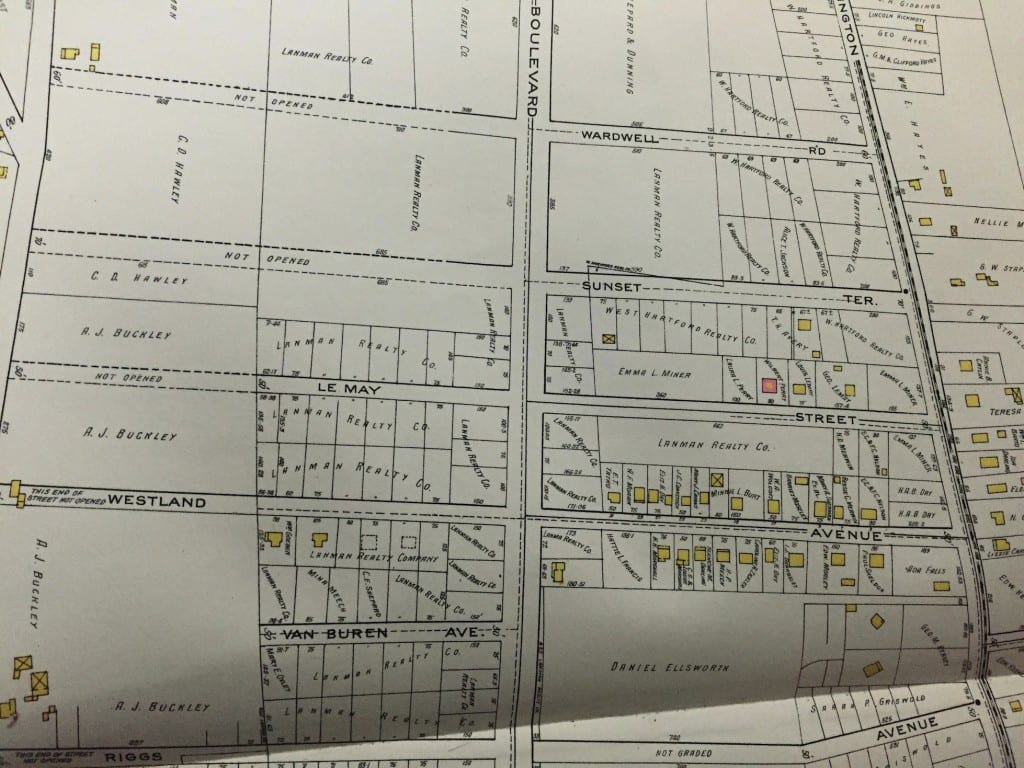
Map of West Hartford, 1917, showing Lemay Street. (Collection of the Noah Webster House & West Hartford Historical Society)
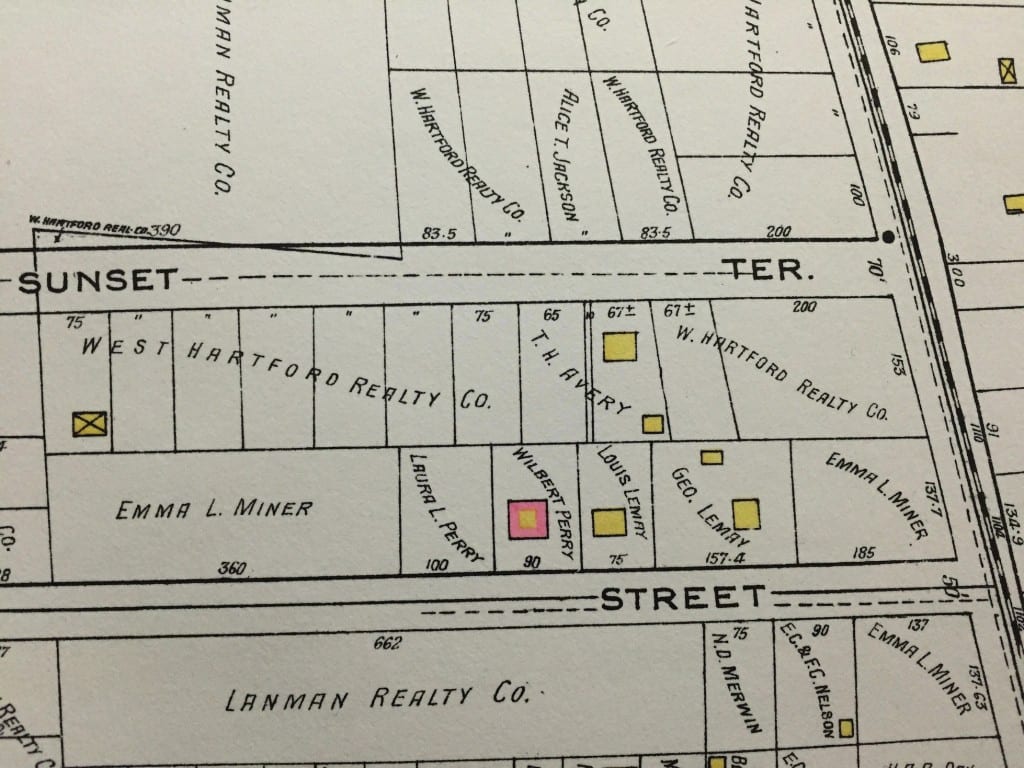
Detail, Map of West Hartford, 1917, showing the first three houses on Lemay Street. (Collection of the Noah Webster House & West Hartford Historical Society)
The next time you are tempted to zip along Lemay Street as a cut-through to your destination, I hope you’ll be inspired to slow it down and appreciate the history of the street. If you are headed north on Lemay, the house that Mr. Davison grew up in at 30 Lemay is on the eastern side of the street on the block between Boulevard and Farmington Avenue. The other three houses mentioned, numbers 19, 15 and 9, are on the western side of the street just before Farmington Avenue.
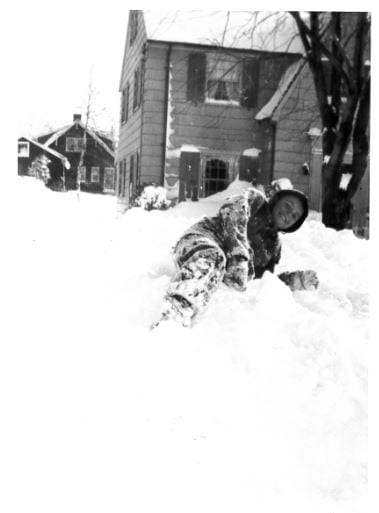
John Davison in front of his 30 Lemay St. house in 1945. Submitted photo
A special thanks to John Davison, Sarah Mocko St. Germain, Abigail Perkins, and Sheila Daley for their assistance in researching this story.
Jennifer DiCola Matos is the Executive Director of the Noah Webster House & West Hartford Historical Society. Her new series “West Hartford Street Smart” pays tribute to the Town’s rich and colorful past. If you have information about the history of West Hartford’s streets, please email her at [email protected].
The Noah Webster House & West Hartford Historical Society is a cultural destination where citizens can learn to understand and appreciate the past. The museum preserves the birthplace of Noah Webster, the founding father, educator, author, and lexicographer who taught generations of Americans what it means to be American. This National Historic Landmark is also a repository for the history of West Hartford, the community that molded Noah Webster’s future, and is still thriving over 250 years later. The historic house and exhibit spaces are open daily 1 p.m. until 4 p.m. For information on the museum’s extensive school and public programs, please visit www.noahwebsterhouse.org, call (860) 521-5362, or follow the museum on Facebook and Instagram (NoahWebsterHouse) and Twitter (@NoahWebHouse).
Like what you see here? Click here to subscribe to We-Ha’s newsletter so you’ll always be in the know about what’s happening in West Hartford!



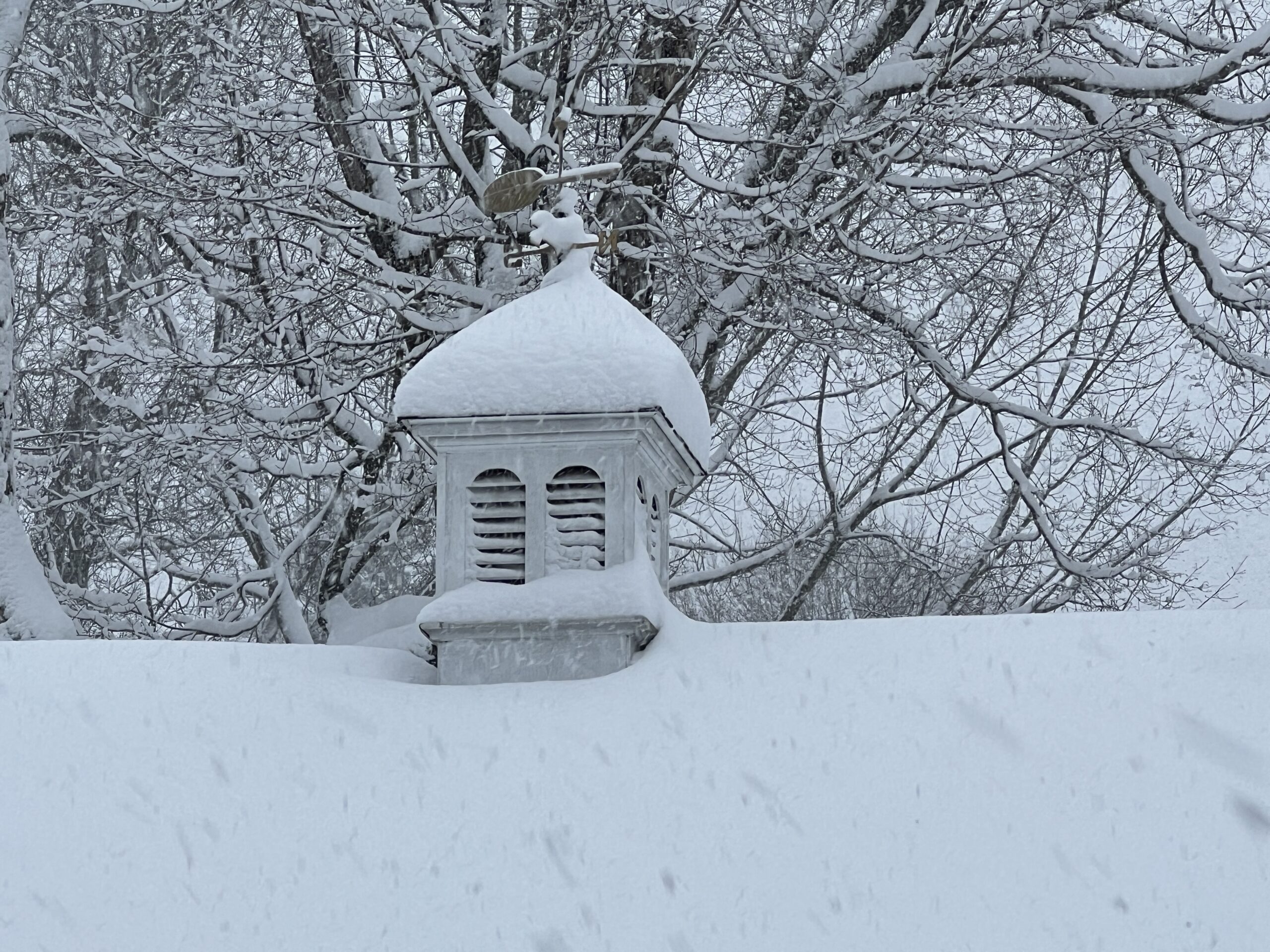
Loved the article. We lived on LeMay street in the 60’s and 70 ‘s. We were the first owners. We purchased the home from Carl Hofer. It had been rented for 35 years by one family.
My family lived at 61 LeMay from the 1940 into the 1990s. They were the first owners of the Ziner built home. Ziner was a builder of many of the homes on the southern part of LeMay Street. A great advantage of southern LeMay Street was the great play area of Sedgwick School as a back yard.